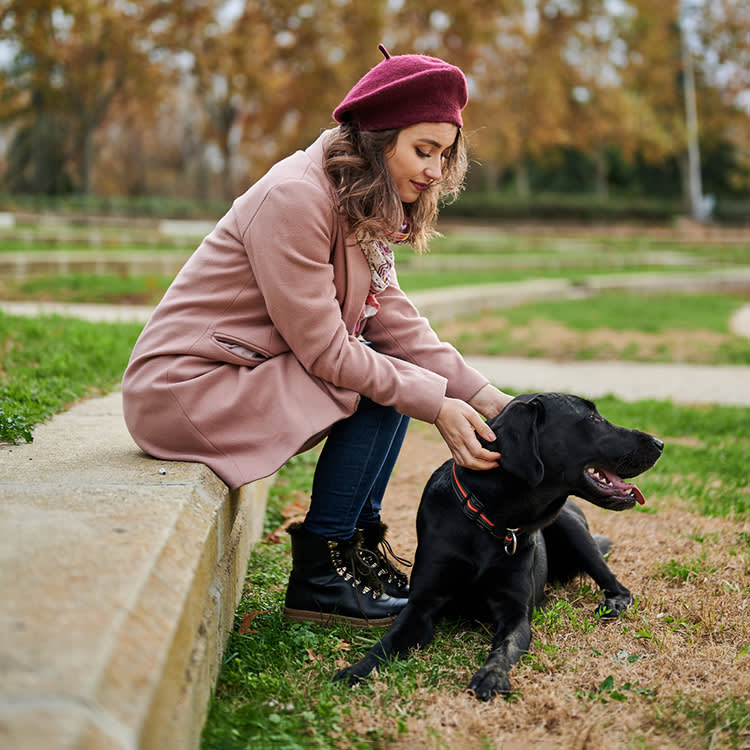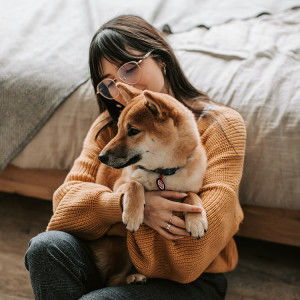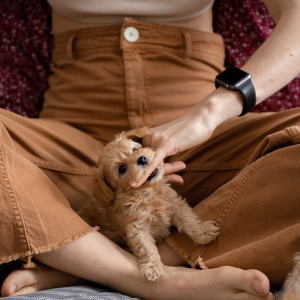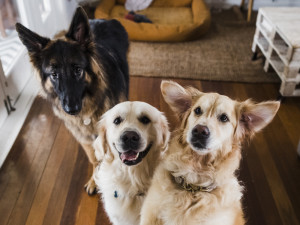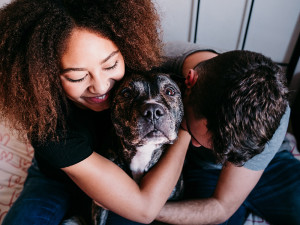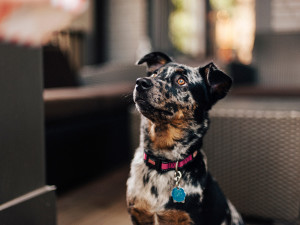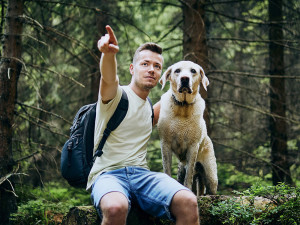How to Learn Your Dog’s Language For a Healthier Relationship
Managing expectations about your dog’s behavior makes for a good relationship
It feels good to dream about the perfect dog and even better to bring them home — a puppy who fits into the square footage of your apartment, an older dog who matches the carpet, a tiny dog you can carry in a stylish purse on the train. The reality that any dog parent soon discovers is that dogs have plans and personalities of their own. They might ride in your purse, but they’ll eat your wallet while you’re trying to figure out the subway map.
Learning your dog’s language means acknowledging their autonomy and understanding that dogs display sensitivity, emotion, and advanced cognitiveopens in a new tab skills; they also have an understanding of fairness, and perhaps most importantly, they have the capacity to form intense social relationships with humans, other dogs, and even other species. Here’s how you can turn your dog’s complicated inner life into a benefit to you both.
Learning About Your Dog
The first thing you find when learning about dogs is there is no one size fits all dog, who comes out of the box perfectly behaved and needing only food, water, and a leash. It just doesn’t happen that way. Nor should it. You have a responsibility to communicateopens in a new tab with your dog in a way they can understandopens in a new tab. By fostering trust and friendship with your pup, you can build a lasting and fulfilling relationship with them.
Think of it from their perspective.
When we bring a new dog into our life, we enter into an interpersonal relationship that entails a responsibility on our part. It can be a very deep and loving relationship, but dogs are not furry little people. They have their own heritage. It can be useful, though, to use a careful dose of anthropomorphismopens in a new tab and survey your surroundings through your dog’s eyes. If you were removed from the only world you knew and placed in an unfamiliar environment — like a puppy separated from their littermates or a dog rescued from the streets — chances are you might feel a little unsure, anxious, and perhaps even fearfulopens in a new tab. It’s not unreasonable to expect that our new dog might feel that way, too.
Cut your new dog some slack.
Fido isn’t peeing on the leg of your brand new baby grand piano because they’re mad at you. They’re probably feeling anxious about being left home aloneopens in a new tab, or maybe they’re just not fully housetrained yet; even adult rescues often need housetrainingopens in a new tab help. A new puppy or adult dog should never be given free rein of the house right from the start. It’s a recipe for disaster.
Learn your dog’s language.
This is what good dog training is all about. With some training, people can learn to speak “dog” like they can any other language. Trainer Bob Bailey once said that “training is a mechanical skill.” It can be learned and refined with time and practice.
It might involve verbal cues, but learning to communicate with dogs also involves developing keen observationalopens in a new tab skills. Spend some time quietly watching your dog and learning about their personality. Do they take on new tasks with joie de vivre, or do they tend toward a more laid-back, wait-and-see approach? Respecting who your dog is and what they need to feel safe and understood fosters trust and builds lasting partnerships.
Find the right trainer.
Try to connect with a traineropens in a new tab who understands how animals learn, one who emphasizes modern, positive reinforcement-based trainingopens in a new tab methods, and who is involved in continuing education. A good dog trainer focuses on teaching the dog what you want her to do and rewarding desirable behaviors rather than catching the dog doing something wrong and punishing bad behaviors. A growing body of literature suggests that punishment- or dominance based-training methods do more harm than good by creating fear and anxiety in some dogs.* Healthy relationships — whether between two people or between a person and dog — are built on fairness and respect, not fear.
What to expect and not expect out of your dog.
Having realistic expectations for your dog at each stage of their life and training is important to forming and maintaining a healthy bond. Even if things are going great, there can be pitfalls. The road to relationship-building is littered with unrealistic expectations. Following are some of the more common myths and pitfalls.
One training class will not teach your dog everything they need to know.
There are very few things in life that either humans or dogs learn in one go. A single class is just a warm-up, one that needs to be followed with more classesopens in a new tab or in-home training. Dog training builds upon previously learned skills. Expectations are gradually raised as the dog becomes increasingly successful at performing the trainer’s requests. And the training should be fun! For both you and your furry friend.
If you’re asking your dog to do something and they’re unable to follow through, you may simply be asking too much of them too soon. Maybe they’re not ready for that level or maybe they’re just having a bad day. We humans have bad days, and nothing says our dogs can’t have bad daysopens in a new tab, too. If this happens, take a break and reassess the training plan. Never take it out on the dog.
Once your dog learns a behavior, you need to reinforce it.
Don’t shrug your shoulders and give up if your dog, especially a puppy, doesn’t keep their training in mind forever with no support. Just like your own workout program, when it comes to dog training “use it or lose it” is all too real. Don’t blame the dog if they can’t remember something you taught them last year and haven’t practiced since.
Environment changes behavior.
A dog that responds to commands at home probably won’t be as receptive while chasing another dog around the park. This simple reality often throws people. Training your dog to come to youopens in a new tab or to reliably perform other behaviors when there is nothing else interesting nearby is one thing — training them to come when they’re running full-tilt at the dog parkopens in a new tab is almost like teaching them another behavior entirely. You need to train and re-train in each environment in which you expect your dog to perform the behavior.
A well-trained dog won’t respond to directives 100 percent of the time.
Some people are surprised and others are relieved to find out that their dog doesn’t have to perform at the top of their game every second to be considered well-trained. Dogs are living beings! Sometimes they just aren’t going to do what we ask even if they know how to do it. A realistic response rate is roughly 80 percent, and this comes after a good bit of time has been invested in training.
Not all dogs like dog parks.
There’s such a thing as dog introverts. Some people love large parties, and they find meeting and mingling with a group of total strangers exhilarating. For others, the experience is fraught with anxiety. Some of us prefer small, intimate gatherings with a few close friends. Dogs are the same. Don’t force your dog to the dog park or daycare facility if they don’t like being there. If you do, you may inadvertently set the stage for future behavioral problems.
Some special considerations for puppies
Puppies are like sponges, soaking up information about their world. So it’s important that their guardians learn to communicate with them in a humane and effective way right from the start. This can be frustrating for owners with brand new pint-sized wrecking balls in the house. Here are a few common concerns for the puppies at home.
Not all naughty behavior is aggression.
Just because your St. Bernard puppy is jumping on the children when they run, biting and mouthingopens in a new tab hands, and eating shoes, it doesn’t mean they’re going to grow up to be Cujo. People are often convinced that they have an aggressive opens in a new tabpuppy. In some cases they do, but usually they and their families just need to learn how to manage a puppy, and how to manage the children around the puppy, by providing appropriate outlets for natural behaviors like chewing, and creating an environment of predictability and structure in which desirable behaviors produce salient rewards for the new dog. As a result, “good behaviors” are reinforced and become more common. And that protects your shoes.
Be careful of unrealistic expectations.
For example, people might think, “Why isn’t my puppy housetrained in seven days like the book says?” There is no set time line for housetraining puppies. Yes, we all want it to go as fast and as smoothly as possible, but it doesn’t always happen that way, even if we are being extra vigilant. Smaller dogs often take longer than larger dogs to figure it out, and some breeds can be more challenging than others. But with patience and attention on your part, they can all learn.
Never get rough playing with your puppy or dog.
Alpha rolls (forcing a dog on her back), scruff shakes (picking a puppy up by the back of their neck and shaking them ) or muzzle grabsopens in a new tab (cupping your hand around the dog’s muzzle in an attempt to discourage mouthing) are never acceptable. The only thing they potentially teach your puppy is to be fearful of you, which can pave the way for future aggression.
Friendships between people are based on realistic expectations of who the other is and is not. It’s the same with dogs. When a new dog enters your life, you can choose to create a deep and lasting friendship with that animal, or to let things drift into irritation and remoteness. The type of relationship we develop depends on our capacity to understand and meet our dog’s needs, based on realistic expectations of what is possible. Relationships are like a dance, and when that dance works, the relationship grows and endures, and enriches our lives in so many priceless ways.
References
*Blackwell, E., et al. 2008. The relationship between training methods and the occurrence of behavior problems, as reported by owners, in a population of domestic dogs. Journal of Veterinary Behavior, 3 (5): 207–217; Herron, M. E., et al. 2009. Survey of the use and outcome of confrontational and non-confrontational training methods in client-owned dogs showing undesired behaviors. Applied Animal Behaviour Science, 117: 47–54.
